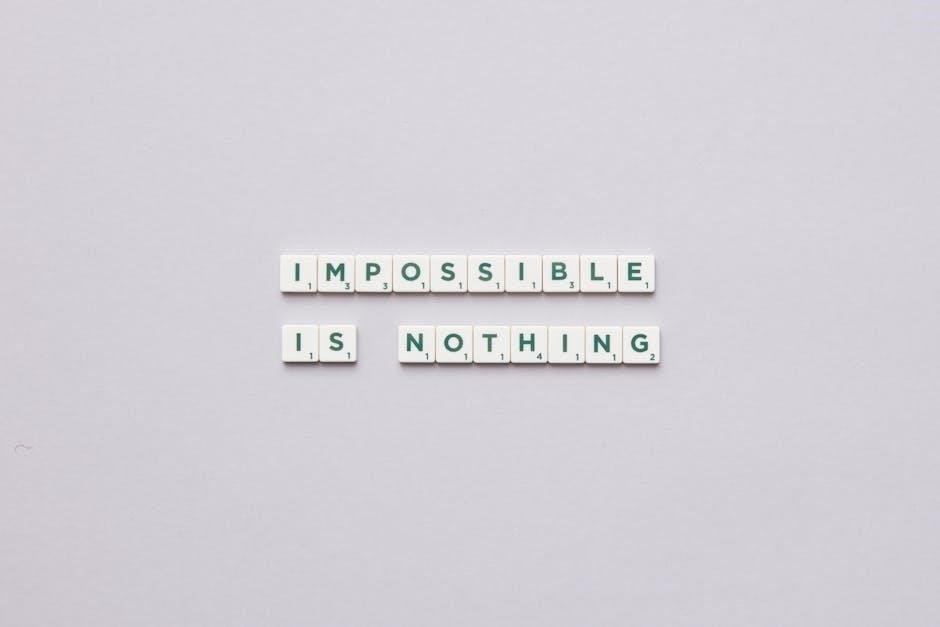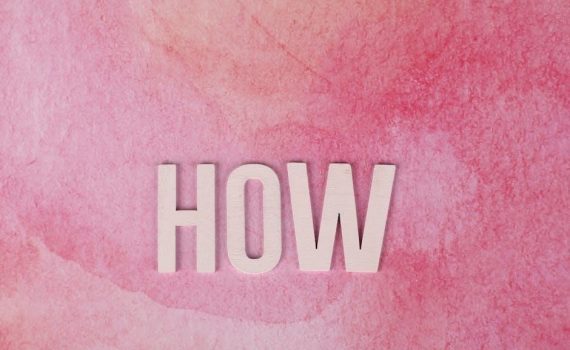how to do nothing pdf
Category : PDF
Jenny Odell’s How to Do Nothing critiques the attention economy, advocating for reclaiming time and focus in a hyper-productive world․ It explores resistance through inaction, emphasizing mindfulness and disengagement from technology to foster deeper connections with nature and oneself․
1․1 Overview of the Book and Its Relevance
How to Do Nothing by Jenny Odell is a thought-provoking critique of the attention economy, challenging readers to rethink productivity and mindfulness in a hyper-connected world․ The book advocates for reclaiming time and focus, offering a compelling argument against the exploitation of human attention by technology and capitalism․ Its relevance lies in its timely exploration of digital overwhelm and the need for meaningful disengagement․
1․2 The Importance of the Topic in Today’s Society
In an era dominated by technology and constant productivity, the concept of “doing nothing” emerges as a vital form of resistance․ By challenging the attention economy, the book addresses the erosion of meaningful connections and deep thinking, offering a necessary counterpoint to the relentless demands of modern life and advocating for a more mindful, engaged existence․
The Concept of “Doing Nothing”
“Doing nothing” is a radical act of resistance against the demands of a hyper-productive, technology-driven society․ It emphasizes the value of stillness, reflection, and reconnecting with oneself and nature, challenging the notion that productivity defines worth․
2․1 Definition and Significance of Doing Nothing
Doing nothing, as defined by Jenny Odell, is the conscious act of disengaging from the demands of a hyper-productive society․ It challenges the notion that value is tied to productivity and instead emphasizes the importance of mindfulness and presence․ In a world dominated by technology and constant stimulation, doing nothing becomes a radical form of resistance, allowing individuals to reclaim their time and attention․ This act not only fosters personal well-being but also encourages a broader reevaluation of societal values and norms, promoting a more meaningful connection to oneself and the environment․
2․2 Historical Context of Resistance Through Inaction
Historically, inaction has been a powerful form of resistance, notably during the 1960s countercultural movements․ By rejecting societal norms, individuals reclaimed their autonomy, mirroring Odell’s philosophy․ This legacy continues today, with doing nothing serving as a testament to the enduring strength of noncompliance as a strategy against oppressive systems and the commodification of human attention in the digital age․

The Attention Economy
The attention economy thrives on exploiting human focus, converting it into profit through digital platforms․ Odell’s work highlights how technology monopolizes our mental resources, eroding deep thinking and genuine connection․
3․1 How the Attention Economy Exploits Human Attention
The attention economy exploits human attention by designing platforms that prioritize engagement over value, using algorithms to keep users hooked․ Social media and technology capitalize on psychological vulnerabilities, commodifying time and mental energy․ This exploitation distracts from meaningful experiences, fostering a culture of constant consumption and undermining the ability to reflect and engage deeply with the world․
3․2 The Role of Social Media and Technology in the Attention Economy
Social media and technology act as key drivers of the attention economy, engineering endless distractions and compulsive engagement․ Platforms like Twitter and Facebook exploit psychological triggers, turning users into commodities for advertisers․ By fostering a culture of constant connectivity, they erode the ability to think deeply, leaving individuals fragmented and disconnected from meaningful experiences and authentic human connection․

Capitalism and Productivity
Capitalism equates productivity with value, commodifying time and attention․ It demands constant output, leaving little room for reflection or leisure, perpetuating a cycle of exploitation and burnout․
4․1 Productivity as a Tool of Capitalist Ideology
Productivity is a cornerstone of capitalist ideology, framing human value through constant output and efficiency․ It perpetuates a culture of busyness, where doing nothing is seen as unproductive and shameful․ By equating self-worth with productivity, capitalism exploits time and attention, leaving little space for reflection or leisure, and reinforcing a system that prioritizes economic gain over well-being and meaningful engagement with the world․
4․2 The Commodification of Time and Attention
Under capitalism, time and attention are treated as commodities, exploited by the attention economy․ Social media and technology are designed to capture and monetize our focus, reducing moments of reflection and genuine connection to opportunities for profit․ This commodification devalues unproductive moments, such as daydreaming or simply being present, fostering a culture where every second must be optimized for efficiency or economic gain․

Resisting Through Inaction
Resisting through inaction is a powerful act against the attention economy and capitalism․ By reclaiming time and attention, individuals challenge the exploitation of their mental energy for profit․
5․1 Doing Nothing as a Form of Resistance
Doing nothing is a radical act of resistance against the attention economy and capitalist productivity․ By consciously disengaging from constant stimulation and digital demands, individuals reclaim their time and mental space․ This act challenges the notion that value lies in productivity, offering a counter-narrative that prioritizes reflection, mindfulness, and genuine human connection over endless activity․
5․2 Reclaiming Time and Attention in a Hyper-Productive World
Reclaiming time and attention involves rejecting the pressure to constantly produce and consume․ By valuing moments of silence and introspection, individuals can break free from the cycles of distraction and mindfulness․ This shift fosters deeper connections with oneself and the environment, encouraging a more meaningful existence that prioritizes presence over perpetual activity and digital engagement․
Reconnecting with Nature
Reconnecting with nature involves immersing oneself in natural environments to enhance well-being․ Recognizing specific species through activities like birdwatching fosters mindfulness and deeper engagement with the world․
6․1 The Importance of Natural Environments for Well-Being
Natural environments play a crucial role in enhancing mental and emotional well-being․ By immersing oneself in nature, individuals can escape the relentless demands of productivity and technology, fostering mindfulness and a sense of calm․ This disengagement from digital distractions allows for deeper self-reflection and connection to the world, promoting overall health and fulfillment in a fast-paced society․
6․2 Birdwatching and Recognizing Species as a Form of Mindful Engagement
Birdwatching offers a profound form of mindful engagement, encouraging individuals to slow down and observe their surroundings․ By learning to identify species, one cultivates a deeper appreciation for nature’s complexity and beauty․ This practice, as highlighted in “How to Do Nothing,” fosters a sense of connection to the environment, promoting mental clarity and a break from the constant demands of modern life․

Practical Steps to Do Nothing
Embrace boredom and silence, disengage from technology, and reclaim time for introspection․ Mindful inaction helps foster clarity and reduces the pressure of constant productivity․
7․1 Embracing Boredom and Silence
Embracing boredom and silence allows individuals to reconnect with their inner selves and the world around them․ By stepping away from constant stimulation, one can cultivate mindfulness and creativity․ This practice challenges the notion that productivity must always define value, offering a radical form of self-care in a society obsessed with busyness․ It fosters clarity and personal growth․
7․2 Mindful Disengagement from Technology
Mindful disengagement from technology involves intentionally unplugging from digital distractions to reclaim mental space․ By setting boundaries with devices, individuals can reduce the influence of the attention economy and engage more deeply with their surroundings․ This practice encourages presence, reflection, and a healthier relationship with technology, fostering a more balanced and fulfilling life in the digital age․

Historical Context of Resistance
The 1960s countercultural movements and bioregionalism inspired modern resistance through inaction, emphasizing disengagement from capitalist productivity and a return to nature and community-focused living․
8․1 The 1960s Countercultural Movements and Their Legacy
The 1960s countercultural movements emphasized dropping out of mainstream capitalist systems, promoting communal living and environmental awareness․ This era’s legacy influences contemporary ideas of resistance, advocating for a shift from productivity-driven lifestyles to mindfulness and connection with nature, as explored in How to Do Nothing․
8․2 Bioregionalism and Environmental Justice Movements
Bioregionalism and environmental justice movements highlight the importance of reconnecting with local ecosystems and addressing systemic inequalities․ These movements encourage mindful engagement with nature, fostering a deeper appreciation of species and environments, as discussed in How to Do Nothing, to promote ecological balance and social equity․
Critiques and Controversies
The book faces criticism for its smug tone and academic language, with some readers finding it inaccessible․ Others praise its well-researched ideas but note its lack of clarity for broader audiences․
9․1 Critiques of the Book’s Tone and Accessibility
Readers have criticized the book’s tone as smug and overly academic, with some finding it inaccessible due to its complex language․ The smugness and lecturing style alienate some readers, while others appreciate its depth but struggle with its meandering prose and lack of practical advice for real-world application․
9․2 Reader Reactions and Critical Reviews
Readers have shared mixed reactions to the book, with some praising its originality and well-researched concepts, while others find its tone smug and inaccessible․ Critics highlight its meandering prose and lack of practical advice, though many appreciate its thought-provoking critique of modern productivity and technology․ The book’s unique perspective on mindfulness and resistance resonates deeply with some, inspiring life-changing reflections and new perspectives on digital disengagement․
Comparisons with Other Authors
Jenny Odell’s work contrasts with Cal Newport’s Digital Minimalism and Celeste Headlee’s Do Nothing, offering a unique blend of critique and personal reflection on resisting the attention economy․
10․1 Cal Newport’s “Digital Minimalism”
Cal Newport’s Digital Minimalism offers practical strategies for reducing digital distractions, emphasizing the importance of intentional technology use․ While Odell’s work focuses on resisting capitalism and reclaiming attention, Newport provides actionable steps for decluttering digital lives, promoting a balanced approach to modern connectivity and productivity, making it a complementary yet distinct perspective in the conversation about tech and society․
10․2 Celeste Headlee’s “Do Nothing”
Celeste Headlee’s Do Nothing aligns with Odell’s themes by advocating for a break from constant productivity․ Headlee’s book pushes for a global shift in thinking, urging individuals to step back from work-centric lives and embrace moments of stillness․ While Odell focuses on societal structures, Headlee offers a personal approach, emphasizing the importance of mental well-being and the value of simply being, rather than endlessly doing․

The Author’s Background
Jenny Odell is an artist, critic, and writer known for her interdisciplinary work exploring technology, nature, and society․ Her approach to “doing nothing” emphasizes mindfulness and environmental engagement, influencing contemporary discourse on productivity and presence․
11․1 Jenny Odell’s Work and Influences
Jenny Odell’s work spans art, criticism, and writing, blending insights from philosophy, ecology, and technology․ Influenced by figures like Audre Lorde and environmental movements, her interdisciplinary approach critiques modern productivity and advocates for reconnection with nature and self․
11․2 Her Approach to the Topic of Doing Nothing
Odell’s approach to “doing nothing” combines personal reflection, historical context, and philosophical inquiry․ She challenges capitalist notions of productivity, advocating for mindful disengagement and reconnecting with nature․ Her work emphasizes the radical potential of inaction as a form of resistance, blending critique with practical steps for reclaiming time and attention in a hyper-productive world․

Real-World Applications
Odell’s ideas inspire individuals to explore natural environments, fostering mindfulness and connection․ Birdwatching emerges as a form of engagement, encouraging reflection and community-driven resistance against modern distractions․
12․1 Personal Anecdotes and the Impact of Doing Nothing
Individuals share stories of transformative experiences through mindful inaction․ By embracing stillness and nature, many discover heightened self-awareness and clarity․ Birdwatching, for instance, becomes a metaphor for deeper engagement with life, fostering patience and appreciation for the present moment․ These personal accounts illustrate how doing nothing can lead to profound inner growth and a renewed sense of purpose in a fast-paced world․
12․2 Community and Collective Resistance
Collective resistance against the attention economy fosters unity and shared purpose․ Communities embracing mindful inaction create spaces for dialogue, reducing isolation․ By valuing presence over productivity, groups empower individuals to reclaim their time, fostering a cultural shift toward sustainability and well-being․ Such movements highlight the power of communal effort in challenging capitalist norms and promoting a more balanced, engaged society collectively․

Cultural and Societal Implications
The attention economy reshapes societal norms, eroding meaningful interactions․ Reclaiming attention challenges capitalist values, fostering a shift toward mindfulness and community-driven change in modern culture․
13․1 The Impact of the Attention Economy on Society
The attention economy profoundly influences society by commodifying human focus, fostering a culture of constant distraction․ This erodes deep thinking, weakens interpersonal connections, and prioritizes productivity over well-being․ By designing systems that exploit engagement, technology perpetuates a cycle of mental exhaustion and societal fragmentation, as individuals become products in the digital marketplace, losing autonomy over their time and attention․
13․2 Reevaluating Value Systems in the Modern World
Ours is a world where value is often measured by productivity and economic output․ How to Do Nothing challenges this by advocating for a shift toward valuing introspection, nature, and human connection․ This reevaluation encourages individuals to question societal norms and redefine success beyond capitalist metrics, fostering a more balanced and meaningful approach to life in an increasingly fast-paced, technology-driven society․
How to Do Nothing challenges readers to resist the attention economy and reclaim their time, advocating for a mindful, slower-paced life․ It offers a powerful critique of modern productivity and technology, urging a reconnection with nature and oneself․ By embracing inaction, individuals can foster deeper connections and meaning in an increasingly fast-paced world, ultimately rediscovering the value of stillness and reflection․
14․1 Summary of Key Points
Jenny Odell’s How to Do Nothing critiques the attention economy, emphasizing the commodification of time and attention․ It advocates for resistance through inaction, urging readers to reclaim their focus from digital distractions․ The book challenges capitalist productivity norms, promoting mindfulness and disengagement from technology․ By valuing stillness and reflection, individuals can foster deeper connections with nature and themselves, ultimately redefining what it means to be productive and fulfilled in a hyper-connected world․
14․2 Final Thoughts on the Book’s Message
Jenny Odell’s How to Do Nothing delivers a powerful call to reclaim our lives from the grip of the attention economy․ By embracing inaction, we resist capitalist narratives of endless productivity and rediscover the value of presence, nature, and meaningful connection․ Odell’s message is a timely reminder that true fulfillment lies not in constant activity, but in the stillness and reflection we often overlook․

References and Further Reading
For deeper insights, explore Jenny Odell’s How to Do Nothing in PDF format․ Also, consider Cal Newport’s Digital Minimalism and Celeste Headlee’s Do Nothing for complementary perspectives on slowing down and mindful living․
15․1 List of Sources and Related Books
- How to Do Nothing: Resisting the Attention Economy by Jenny Odell
- Digital Minimalism by Cal Newport
- Do Nothing: The Art of Effortless Action by Celeste Headlee
- The Attention Economy by Thomas Davenport and John Beck
- In Praise of Slowness by Carl Honoré
- The Art of Power by Thich Nhat Hanh
